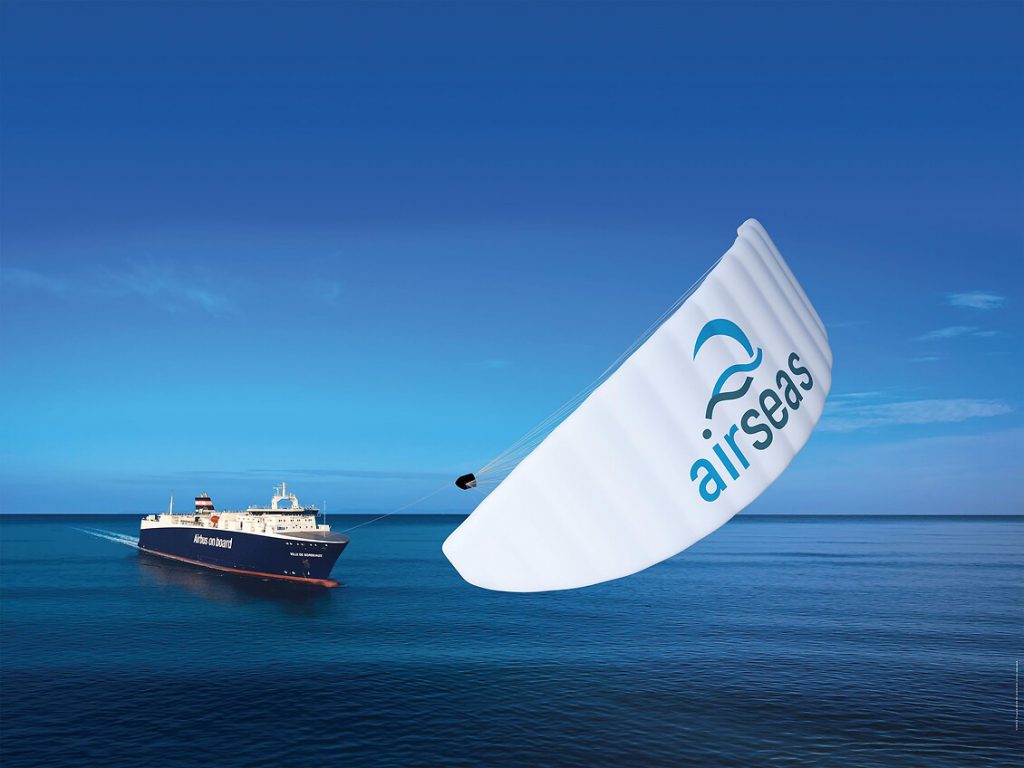As the shipping industry switches to sustainable, alternative fuels, hybrid engines and new ship design, French company Airseas has turned to the power of the wind. The company has installed the first half-sized automated ‘Seawing’ kite to a cargo ship to act as its power source. Frankie Youd of Ship Technology speaks to the company to find out more about the trial and the benefits that the sail brings.
Unfortunately, the shipping industry is no stranger to headlines drawing attention to its less-than-ideal environmental impact, with several companies coming under scrutiny for their contribution to global warming.
However, companies such as Airseas are setting sail towards a greener future for shipping by creating a fully automated sail named the ‘Seawing’. The sail, made from the same material as paragliders, takes off for flight 33m above sea level at the back of the cargo ship, catching high winds that act as propulsion.
The company has estimated that the propulsion produced by the seawing will reduce fuel consumption and emissions from the ship’s main engine by around 20%, reaching up to 40% on transoceanic routes.
The company carried out further trials in January this year, where Airseas installed the first half-sized automated ‘Seawing’ kite to a cargo ship. The ship, chartered by Airbus, is expected to save up to 20% of fuel burn and emissions when fitted with a full-sized kite.
Sail away, sail away, sail away
Founded in 2016 by a former Airbus engineers, including Vincent Bernatets, Airseas was created with the ambition to develop a wind propulsion solution that would guide the shipping industry through the stormy waters, to a cleaner future.
Bringing together a combination of technical knowledge, digital twin technology, and maritime enthusiasm, the company tapped into the potential of wind propulsion to assist the industry’s emission problem.
“We were motivated by our desire to make a significant and immediate difference for the planet, and we knew that there was a huge untapped potential to help the shipping sector become more sustainable, by harnessing the free, unlimited energy from the wind,” says Vincent Bernatets, CEO and founder of Airseas.
“Following a rigorous design and testing process to ensure the highest standards for safety and efficiency, we developed the Seawing, a unique wind propulsion system that looks like a giant kite capable of towing commercial ships.”
The fully automated wing spans 1000m2. Once fully inflated, the wing flies at 300m above sea level where it can catch stronger winds at a more consistent level, keeping ship propulsion consistent. The wing flies with crosswinds in a figure of eight formation, allowing traction force to be multiplied many times compared to what a static wing would produce.
The whole system can be deployed, operated, and then refolded at the push of a button.
One of the most notable elements of the wing is its automated system. Bernatets explains: “The automation system, based on a digital twin, manages all aspects of the kite’s operation and optimises the vessel’s routing with the same precision and safety that Airbus brings to its aerospace technology.”
“The whole system can be deployed, operated, and then refolded at the push of a button, with clear visual aids to indicate to the crew when to activate and retrieve the Seawing. This means that the sail can be safely operated without the need for human intervention on deck.”
The first successful installation of the Seawing was carried out in December last year on a commercial vessel named Ville de Bordeaux, chartered by Airbus. Following on from this success the company has begun six months of trials and testing – which began in January this year – on a Roll on/Roll Off ship that transports aircraft components between France and the US.
During these trials, the T50 Seawing model is being deployed on the ship’s monthly transatlantic voyages while the Airseas team continue to carry out testing of the technology.
Blown away by the benefits
The installation of a Seawing on a vessel brings with it many benefits, the most obvious and notable being the environmental ones.
According to the company, the installation of a sail brings with it immediate and significant reductions in the amount of CO2 produced by ships due to a lower fuel burn. Fuel consumption and emissions from the ships main engine will be reduced by around 20% reaching up to 40% on transoceanic routes.
Wind propulsion also has its benefits compared to other alternative ‘clean’ fuels on the market today, such as hydrogen or ammonia. These fuels are likely to be expensive, usually require extra technology or engine design, and have a lower energy density than traditional fossil fuels.
“Investing in our wind propulsion solution is a decision that already makes sense today. Through reduced fuel costs, we estimate that the investment can make a return after 2.5-5 years,” highlights Bernatets.
“The technology also enables companies to translate their environmental, social, and governance commitments into tangible actions for the planet and answers their customers’ and investors’ growing calls for sustainability.”
Paired with these benefits, the sail also provides long term advantages. It can be installed onto virtually any ship type and retrofitted onto any ocean-going bulker, tanker, or container ship.
This mitigates the need for ammonia or hydrogen friendly engines being installed onto older models of ships, which can be costly and time-consuming.
In contrast, the design of the Seawing allows for retrofitting to occur quickly and easily – so much so that it can be installed during a short port stay. In fact, the first installation on Ville de Bordeaux took the team under 12 hours.
Finally, the unique design of the Seawing system makes it one of the few wind propulsion systems suitable for cargo ships, due to it requiring minimal deck space for operation – meaning minimal interference with cargo operations.
Setting sail for a greener future
With organisations such as The International Maritime Organisation (IMO) setting targets for shipping’s decarbonisation, is the industry on track to achieve these goals, and could wind propulsion be the answer?
The initial greenhouse gas strategy outlined by the IMO states that a reduction in CO2 intensity caused by international shipping should be reduced by at least 50% of 2008 levels by 2050.
Alongside this, the organisation has also said that to reduce CO2 emissions as an average across international shipping, they should be reduced by at least 40% by 2030 to achieve a goal of 70% by 2050.
We strongly believe that the ship of the future will require clean propulsion technologies as well as new fuels.
“We see wind propulsion as a solution that not only delivers immediate carbon and fuel savings, but also as a long-term strategic component of shipping’s future. In the short term, the maritime industry cannot miss a huge opportunity to save time and money now, through energy efficiency technologies that are already available now,” Bernatets notes.
“In the longer term, we strongly believe that the ship of the future will require clean propulsion technologies as well as new fuels. Interestingly, the former could actually facilitate the transition to the latter.”
With ease of installation, reduced emissions data, and unique design making it versatile for any ship type, the Seawing could be the answer shipping needs to stay afloat on its emission reduction journey.
Courtesy: Ship Technology
The opinions expressed in this publication are those of the authors. They do not purport to reflect the opinions or views of the publisher.























